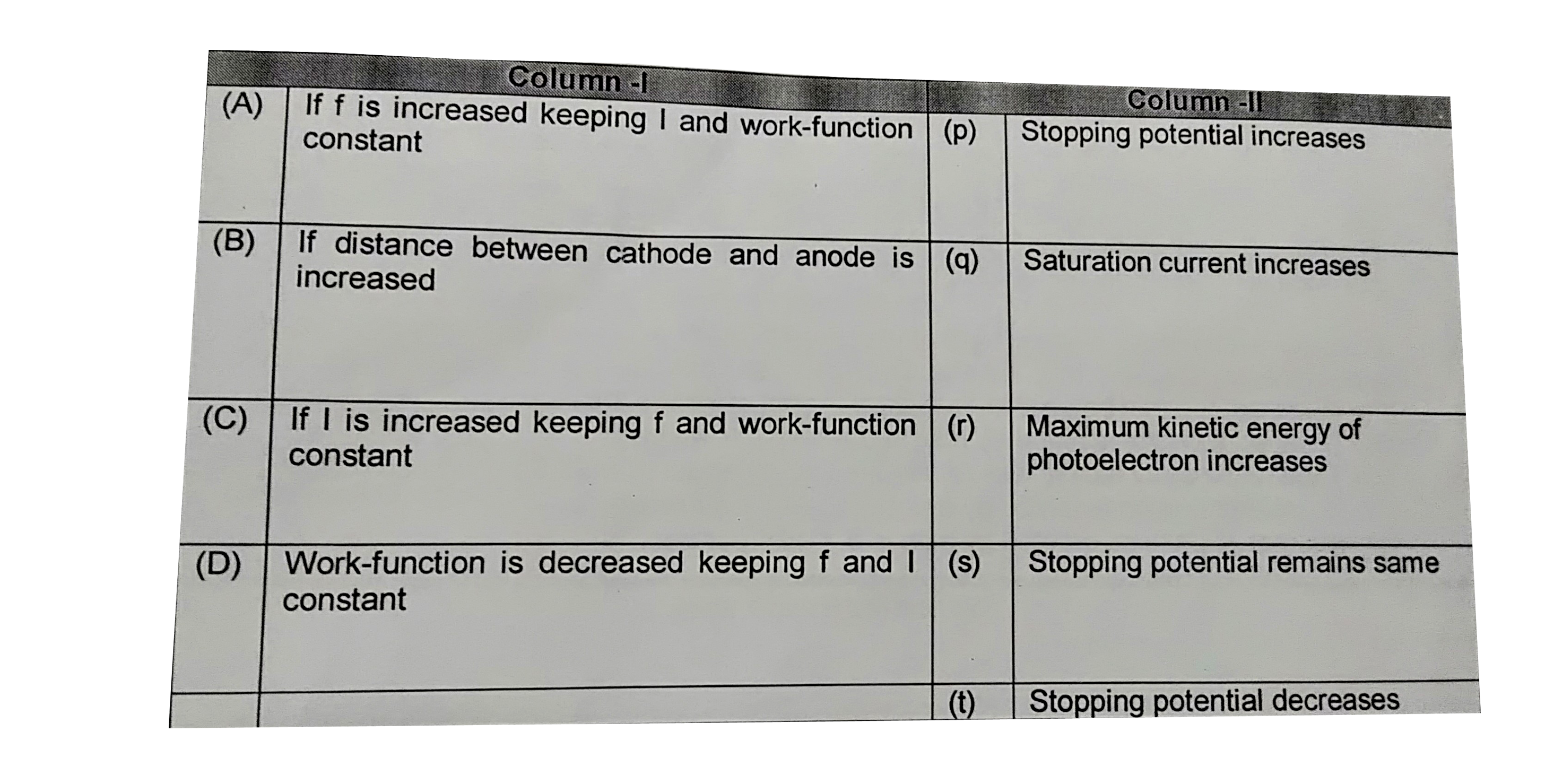The threshold frequency for a photosensitive surface corresponds to an energy of 6.5 eV. If the stopping potential for radiations incident on this surface is 3V, then the energy of the incident radiation will be
3.5 eV
7 eV
9.5 eV
13 eV
The correct Answer is:C
hv=hv0+eVs
hv0=6.5eV and eVs=3eV
∴hv=6.5+3=9.5eV
Topper's Solved these Questions
- ELECTRONS AND PHOTONS BOOK - MARVEL PUBLICATIONCHAPTER - ELECTRONS AND PHOTONS EXERCISE - TEST YOUR GRASP - 17
15 Videos
- ELECTROMAGNETIC INDUCTION AND ALTERNATING CURRENTS BOOK - MARVEL PUBLICATIONCHAPTER - ELECTROMAGNETIC INDUCTION AND ALTERNATING CURRENTS EXERCISE - TEST YOUR GRASP - 16
30 Videos
- ELECTROSTATICSBOOK - MARVEL PUBLICATIONCHAPTER - ELECTROSTATICSEXERCISE - TEST YOUR GRASP
20 Videos
Similar Questions
Knowledge Check
The threshould frequency for a metallic surface corresponds to an energy of 6.2eV and the stopping potential for a radiation insident on this surface is 5V . The incident radiation lies in
Aultra - violet regionBinfra- red regaionCvisible regionDX- ray ragionWhen radiation of wavelength 3000 Å is incident on a photosensitive surface, the maximum K.E. of the photoelectrons is 2.5 eV. What is the stopping potential if radiation of wavelength 1500 Å is incident on the same surface ?
A4.5 VB5.5 VCmore than 5.5 V but less than 7VDless than 5.5 V but more than 4.5 VThe slope of frequency of incident light and stopping potential for a given surface will be
AhBh/eCehDe
In the photoelectric effect experiment, if f is the frequency of radiation incident on the metal surface and I is the intensity of the intensity radiations, then match the following columns:

View SolutionState how in a photo-cell, the work function of the metal influence the kinetic energy of the emitted electrons.
(a) If the intensity of the incident radiation is doubled, what change occur in (i) the stopping potential and (ii) in photoelectric current?
(b) If the frequency of the incident radiation is doubled, what changes occur in the (i) stopping potential and (ii) photoelectric current.
View SolutionExplain giving reasons for the following:
(a) Photoelectric current in a photocell increases with the increase in the intensity of the incident radiation.
(b) The stopping potential (V0) varies linearly with the frequency (v) of the incident radiation for a given photosensitive surface with the slope remaining the same for different surfaces.
(c) Maximum kinetic energy of the photoelectrons is independent of the intensity of incident radiation.
View SolutionThe threshold energy of a surface is 2 eV. When irradiated with some radiations, the stopping potential is found to be 3.6 V. The energy of the incident photon is
View SolutionAs the intensity of radiation incident on a photosensitive material increases
View Solution
